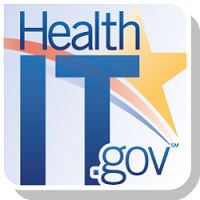 By Dr. Karen B. DeSalvo and Lisa Lewis, ONC
By Dr. Karen B. DeSalvo and Lisa Lewis, ONC
Twitter: @ONC_HealthIT and @KBDeSalvo
We have witnessed dramatic changes in the adoption and use of health information technology (health IT) over the past decade. The nation has transformed from paper-based record keeping into an environment where nearly all of the nation’s hospitals and three-quarters of the nation’s eligible providers are using certified health IT. And from accessible electronic health records to wearable fitness devices and health trackers on smart phones, health IT gives each individual the tools to actively manage their health like never before.
The Office of National Coordinator for Health IT (ONC) is the principal federal entity charged with coordinating nationwide efforts to implement and use the most advanced health IT tools to support the electronic exchange of health information. In that role, we are committed to driving the federal government and private sector forward to leverage health IT to its full potential to achieve better care, improve health outcomes, and support advances in science and research. But in light of the fast pace of innovation in the health IT landscape, ONC needs nimble, effective tools to keep pace in this ever changing field.
That’s why the President’s Fiscal Year 2017 budget request, released earlier this year, includes four legislative proposals (pages 63 – 67) designed to provide ONC with important new tools to support the interoperable sharing of electronic health information to improve the health of our nation.
- Prohibit information blocking. Individuals’ comprehensive medical records should be readily and securely available so their care teams can provide the best possible care and they have the power and tools to manage and make decisions about their health and the health of their loved ones. Unfortunately, as highlighted in an ONC 2015 Report to Congress, some persons and entities are knowingly and unreasonably interfering with the flow of health information, compromising patient care and undermining federal investments in health IT. Our legislative proposal would prohibit these information blocking practices, protect persons who report them, and authorize the HHS Office of Inspector General to investigate and impose penalties for this behavior.
- Require transparency in health IT products and services. Many health IT developers do not publicly disclose the costs, restrictions, and limitations of their products and services. Greater transparency is needed to ensure that health IT consumers have the information they need to effectively compare and select health IT solutions that meet their needs and the needs of their patients while avoiding unanticipated costs and performance issues. Building on new transparency and disclosure requirements included in our 2015 Edition Certification Program Final Rule, this legislative proposal would make available more detailed and meaningful information about certified health IT products. It would also create greater transparency about the business practices of developers who license and sell certified health IT, and in turn greater accountability and stronger incentives for them to continually improve the quality and usability of their products and services.
- Establish rules of the road for the electronic exchange of health information. While ONC’s certification program defines the technical specifications that all certified health IT must possess, nationwide interoperability cannot be accomplished through technical requirements alone. Individual behavior or a system’s or practice’s business practices sometimes inhibit the seamless and secure electronic exchange of information even when clinicians use a certified health IT product that meets appropriate technical specifications. This proposal will allow us to address the business policies, practices, and behavior of health IT entities, just as we do for technical specifications, to help to ensure that an individual’s health information is readily available when and where it matters most.
- Create a safe environment to share health IT best practices. There is clear evidence that the widespread adoption of health IT has already improved, and offers many opportunities to further enhance, the safety of health care. Still, there is work to do in this young field to establish consensus on best practices and consistent implementation across the spectrum of health care providers, technology developers, researchers, and other relevant entities. This proposal will allow ONC to establish a public-private partnership that identifies and strengthens ways to encourage better reporting and analysis of health IT-related safety events. It will provide a confidential space for developers and providers to address concerns and cultivate new educational resources and training materials to build health IT safety competencies across the care continuum.
As with all technology, health IT will continue evolving rapidly and we must be able to keep pace with the needs of the ever-changing landscape. These legislative proposals are a critical component of our efforts to do so, and to enable truly interoperable health information exchange that benefits all individuals and the health system at large.
This post was originally published on the Health IT Buzz and is syndicated here with permission.
